Podcast: Play in new window | Download
Subscribe: Apple Podcasts | RSS
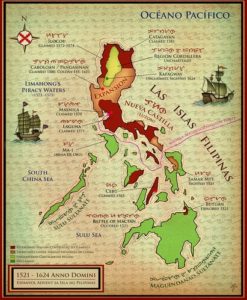 The date was October 25, 1593 and the place was Manila, the colonial capital of the Spanish Philippines. The night before a terrible tragedy occurred: the king’s representative in this far-flung piece of the Spanish Empire, Governor Gómez Pérez Desmariñas, had just been killed by a group of Chinese mutineers. Weeks before, the King of Cambodia had sent to Manila 2 elephants as gifts, accompanied by two ambassadors, to try to obtain Spanish help against a possible invasion by the King of Siam. Governor Desmariñas thanked the Cambodian king for the elephants, sent him a horse, some emeralds and some Spanish goods, and promised assistance to help him fend off the Siamese invasion. The governor assembled a flotilla of almost 200 seafaring craft under the pretext of helping the Cambodians. Governor Desmariñas himself would command the galley called La Capitana which had 28 benches to be manned by over 250 Chinese rowers. Instead of sailing to help the Cambodians, though, the governor had other plans. Desmariñas had set his sights farther south, to the Moluccas, known to the world as the Spice Islands, and wanted to capture the fort at Ternate which was the capital of a wealthy kingdom ruled by a man named Sultan Said. Two days into the journey, the Chinese crew mutinied and took control of the galley La Capitana. Governor Desmariñas was killed by a blow to the head. The remaining ships returned to Manila. The Spanish Philippines was now without a governor and soldiers were called to guard the palace and to keep the peace in Manila in case of civil unrest. One of the palace guards was a man named Gil Pérez, a man in his early 40s who had been a soldier in service of the Spanish king for all his adult life. On the day after the governor’s assassination, Pérez was pulling double duty around the palace and in the afternoon he leaned up against a wall and nodded off. What happened after that has been a mystery for over 400 years.
The date was October 25, 1593 and the place was Manila, the colonial capital of the Spanish Philippines. The night before a terrible tragedy occurred: the king’s representative in this far-flung piece of the Spanish Empire, Governor Gómez Pérez Desmariñas, had just been killed by a group of Chinese mutineers. Weeks before, the King of Cambodia had sent to Manila 2 elephants as gifts, accompanied by two ambassadors, to try to obtain Spanish help against a possible invasion by the King of Siam. Governor Desmariñas thanked the Cambodian king for the elephants, sent him a horse, some emeralds and some Spanish goods, and promised assistance to help him fend off the Siamese invasion. The governor assembled a flotilla of almost 200 seafaring craft under the pretext of helping the Cambodians. Governor Desmariñas himself would command the galley called La Capitana which had 28 benches to be manned by over 250 Chinese rowers. Instead of sailing to help the Cambodians, though, the governor had other plans. Desmariñas had set his sights farther south, to the Moluccas, known to the world as the Spice Islands, and wanted to capture the fort at Ternate which was the capital of a wealthy kingdom ruled by a man named Sultan Said. Two days into the journey, the Chinese crew mutinied and took control of the galley La Capitana. Governor Desmariñas was killed by a blow to the head. The remaining ships returned to Manila. The Spanish Philippines was now without a governor and soldiers were called to guard the palace and to keep the peace in Manila in case of civil unrest. One of the palace guards was a man named Gil Pérez, a man in his early 40s who had been a soldier in service of the Spanish king for all his adult life. On the day after the governor’s assassination, Pérez was pulling double duty around the palace and in the afternoon he leaned up against a wall and nodded off. What happened after that has been a mystery for over 400 years.
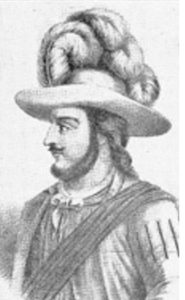 Pérez awoke in an unfamiliar place. He found himself in the middle of a bustling city, but it was not Manila. Passersby thought him curious in his Philippine uniform that was seemingly out of place. Completely rested and of sound mind, Pérez asked one of the curious where he was, what city he found himself in. The response shocked him. The Manila palace guard was in the Plaza Mayor of Mexico City in the Viceroyalty of New Spain, nearly 9,000 miles from where he had been only moments before. Pérez’s appearance generated immediate attention from the authorities including the Viceroy of New Spain, Luis de Velasco, whose palace Pérez found himself in front of. The Mexican Captain of the Guard brought Gil Pérez before Viceroy Velasco. The Manila palace guard recounted his story rather coolly and with an air of self-confidence and answered all the questions put to him. Pérez also related to the viceroy a detailed story of the murder of the governor of the Philippines, Gómez Pérez Desmariñas, which happened the night before. If the story were true, reasoned the viceroy, it would take months to verify the truth of the tale, as that was how long it took a galleon to travel from Manila to Acapulco. Gil Pérez had the assured air of a seasoned soldier and with his straightforward and satisfactory explanations, the viceroy was inclined to believe him, but didn’t know what to do with him. There was no doubt that one moment Pérez was in Manila and the next in Mexico City, the trouble was explaining how. As the representative of the king in Mexico and as someone whose office was interconnected with ecclesiastical authorities in New Spain, the viceroy had to do something. As one clerical advisor had said to him regarding the event, “the devil was at both the bottom and the top of it.” It didn’t take long for Pérez to generate interest from higher-up church officials who wanted to know if he was in much closer touch with
Pérez awoke in an unfamiliar place. He found himself in the middle of a bustling city, but it was not Manila. Passersby thought him curious in his Philippine uniform that was seemingly out of place. Completely rested and of sound mind, Pérez asked one of the curious where he was, what city he found himself in. The response shocked him. The Manila palace guard was in the Plaza Mayor of Mexico City in the Viceroyalty of New Spain, nearly 9,000 miles from where he had been only moments before. Pérez’s appearance generated immediate attention from the authorities including the Viceroy of New Spain, Luis de Velasco, whose palace Pérez found himself in front of. The Mexican Captain of the Guard brought Gil Pérez before Viceroy Velasco. The Manila palace guard recounted his story rather coolly and with an air of self-confidence and answered all the questions put to him. Pérez also related to the viceroy a detailed story of the murder of the governor of the Philippines, Gómez Pérez Desmariñas, which happened the night before. If the story were true, reasoned the viceroy, it would take months to verify the truth of the tale, as that was how long it took a galleon to travel from Manila to Acapulco. Gil Pérez had the assured air of a seasoned soldier and with his straightforward and satisfactory explanations, the viceroy was inclined to believe him, but didn’t know what to do with him. There was no doubt that one moment Pérez was in Manila and the next in Mexico City, the trouble was explaining how. As the representative of the king in Mexico and as someone whose office was interconnected with ecclesiastical authorities in New Spain, the viceroy had to do something. As one clerical advisor had said to him regarding the event, “the devil was at both the bottom and the top of it.” It didn’t take long for Pérez to generate interest from higher-up church officials who wanted to know if he was in much closer touch with 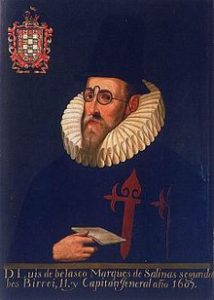 demonic forces than any average good Christian. As the supreme royal authority in Mexico, Viceroy Velasco’s course of action was clear: Pérez was turned over to the Holy Office and would be subjected to the rigors of the Inquisition. Because this was such a strange case, Pérez was taken out of Mexico City and sent to Santo Domingo on the Caribbean island of Hispaniola. There, a sturdy cell would be prepared for him and he would face the inquisitors who would undoubtedly get to the bottom of what happened.
demonic forces than any average good Christian. As the supreme royal authority in Mexico, Viceroy Velasco’s course of action was clear: Pérez was turned over to the Holy Office and would be subjected to the rigors of the Inquisition. Because this was such a strange case, Pérez was taken out of Mexico City and sent to Santo Domingo on the Caribbean island of Hispaniola. There, a sturdy cell would be prepared for him and he would face the inquisitors who would undoubtedly get to the bottom of what happened.
Gil Pérez, having over 20 years of soldiering under his belt, and having endured everything imaginable in service of his king throughout the empire, took everything in stride. In some accounts of the story Pérez had almost welcomed the imprisonment. Not only was he a good soldier who obeyed the commands of authority, he stated that being cared for in a cell with a roof over his head and guaranteed rations, would be an improvement over fighting infidels in the jungles of the Philippines or long marches through hot deserts with little or no provisions. Pérez took what came and the members of the Holy Office who quizzed him found him to be agreeable and reported that his conduct was exemplary. After about a month of imprisonment the inquisitors who had gotten to know Pérez very well did not know what to do with him. Clearly, he had no contact with the demonic realm and if he had somehow been under the control of the devil it was of no fault of his own. He was a good Christian and had proved his loyalty to the Spanish king through his impeccable military service.
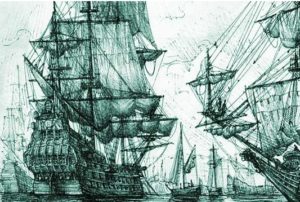 The holding pattern was broken with the arrival of a Spanish galleon at Acapulco which had departed Manila a few months earlier. The galleon came not only laden with exotic goods from the East but with news. It was soon revealed that everything Gil Pérez had said about the murder of Governor Desmariñas and the failed expedition to conquer the Spice Islands was 100% correct. The galleon passengers had recounted the stories exactly as Pérez did months before. What was strange was that even the dates matched. The authorities were left with something they could not explain: a man had showed up in Mexico City, while moments before he was guarding the palace in Manila. Pérez was released from the care of the Spanish Inquisition authorities in Santo Domingo and was recalled to Mexico City. When he arrived in Mexico City he met up with some members of the Manila galleon who had recognized him as being a palace guard in the Philippines, with even one claiming they had seen him there on the day of Governor Desmariñas’ assassination just hours before he was in Mexico. Viceroy Velasco was in the same position he was in just a few months before: What to do with Gil Pérez? He was on good terms with the Inquisition and no crimes had been committed, earthly or otherwise. There was nothing else he could do but send him on the next ship back to Manila to have him resume his duties. Nine weeks later, Gil Pérez was back in Manila at his duty post in front of the governor’s palace.
The holding pattern was broken with the arrival of a Spanish galleon at Acapulco which had departed Manila a few months earlier. The galleon came not only laden with exotic goods from the East but with news. It was soon revealed that everything Gil Pérez had said about the murder of Governor Desmariñas and the failed expedition to conquer the Spice Islands was 100% correct. The galleon passengers had recounted the stories exactly as Pérez did months before. What was strange was that even the dates matched. The authorities were left with something they could not explain: a man had showed up in Mexico City, while moments before he was guarding the palace in Manila. Pérez was released from the care of the Spanish Inquisition authorities in Santo Domingo and was recalled to Mexico City. When he arrived in Mexico City he met up with some members of the Manila galleon who had recognized him as being a palace guard in the Philippines, with even one claiming they had seen him there on the day of Governor Desmariñas’ assassination just hours before he was in Mexico. Viceroy Velasco was in the same position he was in just a few months before: What to do with Gil Pérez? He was on good terms with the Inquisition and no crimes had been committed, earthly or otherwise. There was nothing else he could do but send him on the next ship back to Manila to have him resume his duties. Nine weeks later, Gil Pérez was back in Manila at his duty post in front of the governor’s palace.
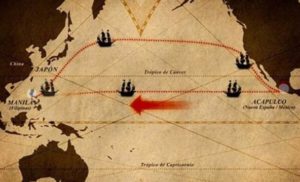 Four hundred years of this story being told and re-told has led to four hundred years of speculation. The first question one must ask is, does proof exist in the historical record that this event really happened? Apparently, the answer to this is, “yes.” In a historical work of the period called Sucesos de las Islas Filipinas, or in English, “Successes of the Philippine Islands,” the story of Gil Pérez is mentioned briefly. The author of this work was Dr. Antonio de Morga, who served as a judge of the criminal court of the Royal Audencia of New Spain and who also served as a legal advisor to the office of the Spanish Inquisition. In his book he notes how remarkable it was that the news of the Philippine governor was known in Mexico City the very same day but did not go into detail about the circumstances of the palace guard. Another work, Conquista de las Islas Filipinas, or in English, “The Conquest of the Philippine Islands,” written nearly a century later by a man named Fray Gaspar de San Agustin, gives greater details on the story of Gil Pérez’s mysterious teleportation and conclusively determines that it was the devil’s own work with the help of women who served as enchantresses.
Four hundred years of this story being told and re-told has led to four hundred years of speculation. The first question one must ask is, does proof exist in the historical record that this event really happened? Apparently, the answer to this is, “yes.” In a historical work of the period called Sucesos de las Islas Filipinas, or in English, “Successes of the Philippine Islands,” the story of Gil Pérez is mentioned briefly. The author of this work was Dr. Antonio de Morga, who served as a judge of the criminal court of the Royal Audencia of New Spain and who also served as a legal advisor to the office of the Spanish Inquisition. In his book he notes how remarkable it was that the news of the Philippine governor was known in Mexico City the very same day but did not go into detail about the circumstances of the palace guard. Another work, Conquista de las Islas Filipinas, or in English, “The Conquest of the Philippine Islands,” written nearly a century later by a man named Fray Gaspar de San Agustin, gives greater details on the story of Gil Pérez’s mysterious teleportation and conclusively determines that it was the devil’s own work with the help of women who served as enchantresses.
In modern times, theories have been proposed by those who accept what happened to Gil Pérez as historical fact, and those theories are legion. The most common theory proposed nowadays involves alien abduction. In so many strange and anomalous events, UFOs are given over as tidy explanations for the bizarre events. The case of Gil Pérez is no different. It’s very simple: the palace guard was abducted by aliens and dropped off in front of the wrong palace. Interdimensional portals also make up some of the theories, with some even citing the “special” nature of Mexico City. Pérez appeared in the Zócalo of Mexico City, the center of the city which was supposedly the exact spot where the Aztecs realized their prophesy and built a temple where they saw an eagle eating a snake atop a cactus. Not only was the spot of Pérez’s appearance in the heart of the civic-ceremonial center of the Aztec Empire, in the early colonial days of New Spain this was incredibly close to where the Virgin of Guadalupe appeared on the cloak of the humble Indian San Juan Diego on the grounds of the municipal cathedral. Is the center of Mexico City a special place where portals and wormholes exist to connect faraway places and dimensions? This story is quite similar to what is found in the Arabic literature written during the Islamic Golden Age, such as The Arabian Nights, where evil jinn, or genies, teleport people at will, that some believe the teleportation of Pérez was the result of his angering a jinn-like spirit while fighting in the Islamic-controlled areas of the Philippines. Others contend that Pérez was a Mexican time traveler who got his coordinates messed up and ended up at the wrong place. Whatever the case may be, this strange story of the teleportation of Gil Pérez will surely be discussed and examined for many centuries to come.
REFERENCES
Janvier, Thomas A. Legends of the City of Mexico. New York: Harper and Brothers Publishers, 1910.
